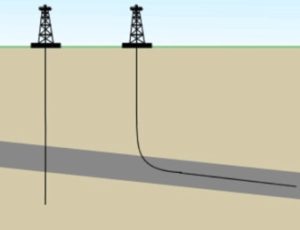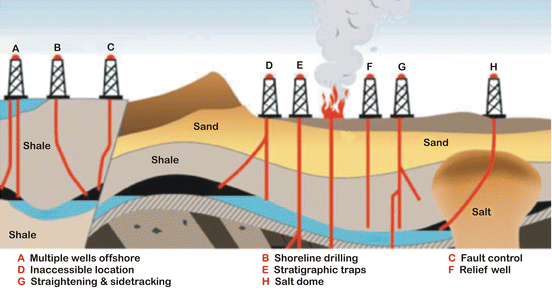Directional Drilling Techniques for Maximum Precision
Directional drilling has emerged as a cornerstone in the oil and gas industry, enabling operators to reach targets with remarkable precision and efficiency. This advanced drilling technique not only optimizes resource extraction but also minimizes environmental impact and operational costs. In this detailed guide, we will delve into various directional drilling techniques that ensure maximum precision, their benefits, and the latest technological innovations driving this field forward.
Understanding Directional Drilling
Directional drilling involves steering a wellbore along a planned trajectory to access subsurface resources that are not directly beneath the drilling site. This technique allows for drilling at various angles, making it possible to reach multiple targets from a single location and navigate around obstacles.

The Importance of Precision in Directional Drilling
Precision in directional drilling is crucial for several reasons. Accurate wellbore placement maximizes resource recovery, reduces drilling time and costs, and minimizes environmental disturbance. Precision also ensures that the well intersects the target reservoir in the optimal location, enhancing production efficiency.
Key Directional Drilling Techniques
Horizontal Drilling
Horizontal drilling is a method where the wellbore is turned horizontally at depth within the target formation. This technique is particularly effective in shale formations, where horizontal wells can expose more of the reservoir, significantly increasing production rates. Horizontal drilling is widely used in the extraction of unconventional resources such as shale gas and oil. https://drillitco.com.au/
Extended Reach Drilling (ERD)
Extended Reach Drilling (ERD) involves drilling wells that extend several kilometers horizontally from the drilling site. This technique allows operators to reach distant reservoirs without the need for additional drilling rigs. ERD is particularly useful in offshore drilling, where it can access multiple offshore reservoirs from a single onshore location, reducing costs and environmental impact.
Multilateral Drilling
Multilateral drilling involves creating multiple lateral branches from a single main wellbore. This approach maximizes reservoir contact and significantly enhances production rates. Multilateral wells are particularly useful in complex reservoirs with multiple zones of interest, allowing for efficient extraction of resources from different layers.
Technological Innovations Enhancing Precision
Rotary Steerable Systems (RSS)
Rotary Steerable Systems (RSS) have transformed directional drilling by providing continuous steering control while drilling. These systems use advanced sensors and downhole motors to adjust the wellbore trajectory in real-time. RSS technology allows for precise navigation through complex geological formations, improving accuracy and efficiency.
Measurement-While-Drilling (MWD) and Logging-While-Drilling (LWD)
Measurement-While-Drilling (MWD) and Logging-While-Drilling (LWD) technologies provide real-time data on wellbore conditions, enabling operators to make informed decisions during the drilling process. MWD tools measure critical parameters such as inclination, azimuth, and toolface orientation, while LWD tools collect geological data, including formation density, porosity, and resistivity. These technologies are essential for maintaining precision and optimizing well placement.
Automated Drilling Systems
Automation is playing an increasingly significant role in directional drilling. Automated drilling systems use advanced algorithms and machine learning to optimize drilling parameters and improve efficiency. These systems can automatically adjust drilling speed, weight on bit, and mud flow rates in real-time, reducing human error and enhancing overall performance.
Challenges in Achieving Maximum Precision
Geological Uncertainty
One of the primary challenges in directional drilling is geological uncertainty. Subsurface conditions can be unpredictable, making it difficult to maintain precise control over the wellbore trajectory. Advanced geophysical surveys and real-time data analysis are essential for mitigating these uncertainties and ensuring accurate well placement.
Technological Complexity
Directional drilling involves the use of sophisticated equipment and technology, which requires highly skilled personnel and rigorous maintenance protocols. Ensuring the reliability and accuracy of downhole tools is critical for successful operations. Continuous training and development of drilling personnel are essential to keep up with technological advancements.
Environmental and Regulatory Constraints
Directional drilling must comply with strict environmental regulations and standards. Operators must carefully manage drilling fluids, cuttings, and emissions to minimize environmental impact. Ongoing monitoring and reporting are essential to ensure compliance with regulatory requirements and maintain the industry’s social license to operate.
Future Trends in Directional Drilling
Real-Time 3D Visualization
Real-time 3D visualization technology is expected to play a significant role in the future of directional drilling. By providing a three-dimensional view of the subsurface, operators can make more informed decisions and optimize wellbore placement with greater accuracy. This technology enhances the ability to navigate complex geological formations and avoid potential hazards.
Enhanced Downhole Sensors
Advancements in downhole sensor technology are continuously improving the precision and reliability of directional drilling. Enhanced sensors can provide more detailed and accurate data on subsurface conditions, enabling operators to make better-informed decisions. These sensors are also becoming more robust and capable of withstanding extreme downhole environments.
Artificial Intelligence and Machine Learning
The integration of artificial intelligence (AI) and machine learning in directional drilling is poised to revolutionize the industry. AI-driven algorithms can analyze vast amounts of data in real-time, optimizing drilling parameters and improving efficiency. Machine learning models can predict subsurface conditions and potential drilling challenges, allowing operators to proactively address issues and maintain precision.
Conclusion
Directional drilling techniques have advanced significantly, enabling unprecedented precision in accessing subsurface resources. By utilizing methods such as horizontal drilling, extended reach drilling, and multilateral drilling, operators can maximize resource recovery, reduce costs, and minimize environmental impact. Technological innovations like rotary steerable systems, MWD/LWD, and automated drilling systems continue to enhance precision and efficiency. Despite challenges such as geological uncertainty and regulatory constraints, the future of directional drilling looks promising with ongoing advancements in real-time visualization, downhole sensors, and AI-driven technologies.

